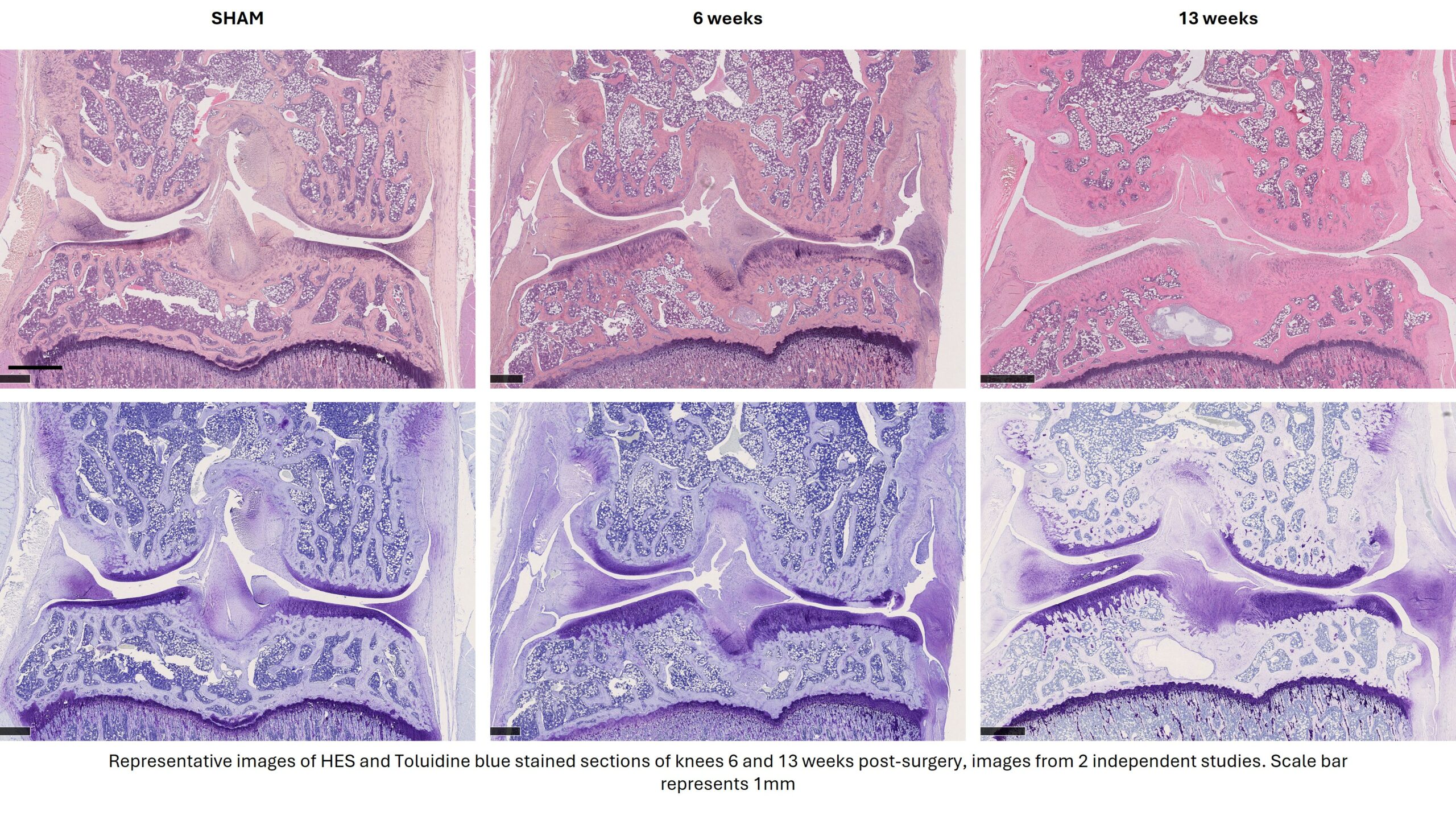
Assess the effect of your candidates on arthritis and inflammation
Atlantic Bone Screen provides its Customers and Partners services for the non-clinical evaluation of their compounds. Atlantic Bone Screen benefits from its own animal facility to provide in-vivo assays to its Customers. Models are chosen and validated by our Scientific Team and with our expert consultants and pathologists network. Either standard or tailor made models can be proposed for non tumoral diseases.
Atlantic Bone Screen provides non-clinical animal models miming human cartilage pathologies by testing drug candidates, biomaterials and nutraceuticals.
Among these pathologies, osteo-arthritis, mono-arthritis and rheumatoid arthritis are pathologies resulting in cartilage degradation and severe pain for the patients. Depending on the model, the duration and the severity of the cartilage degradation, animals pain can differ and a strong attention is led on the ethical management of the animals.
Experimental animal models – Arthritis by chemical induction
CIA, Collagen Induced Arthritis – mice
For this model of rheumatoid arthritis, disease is induced in mice by immunization against type II Collagen, with one injection of type II Collagen in complete Freund´s adjuvant (CFA). A “boost” injection with collagen in Incomplete Freund´s adjuvant (IFA) is given day 21 to enhance disease development.
AIA, mBSA – rat
In this model mimicking mono-articular arthritis, rats are first sensitized twice with 1 week interval with an emulsion of mBSA (methylated bovine serum albumin) in Freund’s complete adjuvant, and then arthritis is induced by intra-articular injection of mBSA in the right or the left knee.
Experimental animal models – Evaluated parameters
In vivo:
Follow up of clinical signs (lameness), pain…
Measure of the swelling of the injected knee.
Micro-CT:
Evaluation of subchondral bone lesions at distal femoral and proximal tibial ends.
Scoring of osteophytes, subchondral bone sclerosis and presence of bone cysts.

Histology :
Hematoxylin-Eosin-Safran (HES) and toluidine blue (TB) staining to evaluate the joint cavity, cartilage degradation, synovial membrane and the fibrous layer of the articular capsule.
This can be complemented by histopathological analysis (with for example SMASH scoring), realised by an external partner (ECVP-certified veterinary pathologist).
Experimental animal models – Osteoarthritis by chemical induction
MIA – rat
Rats receive monoiodoacetate intra-articular injection in one knee joint. In these conditions, first signs of cartilage damages are seen 2 weeks after injection.
Experimental animal models – Osteoarthritis by surgical induction
ACLT/MNX – rat
Unilateral osteoarthritis is surgically induced by transection of anterior cruciate ligament and resection of a third of the medial meniscus. In these conditions, first signs of cartilage damages are seen 6 weeks after surgery.
ACLT – rabbit
Unilateral osteoarthritis can also be performed by transection of anterior cruciate ligament on rabbits.
Evaluated parameters – Osteoarthritis
In vivo:
Follow up of clinical signs (lameness), pain…
Micro-CT:
Evaluation of subchondral bone lesions at distal femoral and proximal tibial ends. Scoring of osteophytes, subchondral bone sclerosis and presence of bone cysts.
Histology :
Hematoxylin-Eosin-Safran (HES) and toluidine blue (TB) staining to evaluate the extent of articular cartilage damages, subchondral bone degradation and osteophytes formation
Experimental animal models – customized model
Atlantic Bone Screen develops tailor-made animal models under request in order to match its customers’ needs and constraints. For some animal models, Atlantic Bone Screen works with its experts’ network in order to propose its customers the largest range of models.
•Rodent expertise and other animals with approved partners – In-house veterinary consultant
For these studies, Atlantic Bone Screen can rely on highly qualified scientists and technicians and on a large range of analysis techniques for biomarker analysis, imaging analysis and histological services.